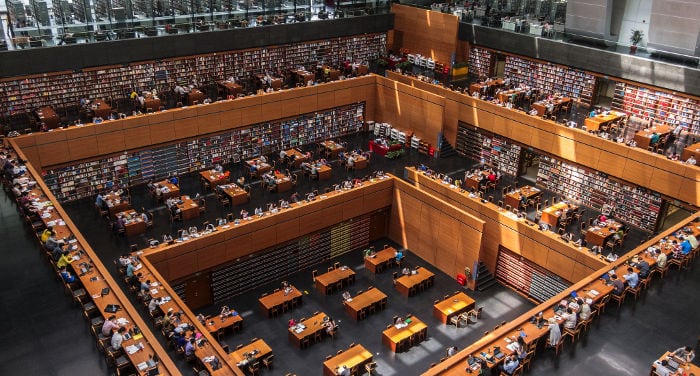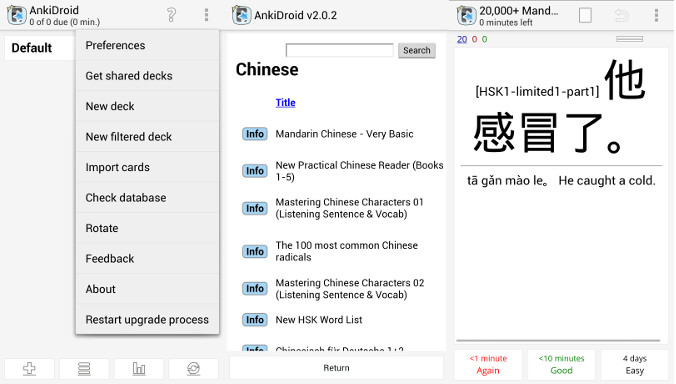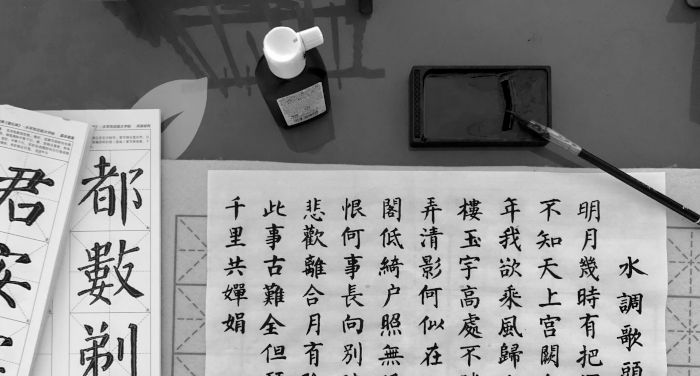
With this article it is my hope to give you an idea of what is one of the most important realities of modern China, the National Library of China. As a book lover and student of the great world of China, I find that this place must necessarily be known and explored, especially if you’re a student of China.
To get into this library you need to have a card, but that’s not a problem, anyone can get one, even we foreigners! Just bring your passport with you and you’re done.
The National Library of China (中国国家图书馆, Zhongguo Guojia Tushuguan), developed from what was originally the 京师图书馆 (Jingshi Tushuguan) “Library of the Capital”.
At the beginning of the twentieth century, due to the new reforms and spread of Western knowledge, the intellectuals asked the Qing government to build libraries and schools in the hope of promoting national culture and importing advanced sciences and technologies.
On September 9, 1909, the government of the Qing Dynasty approved the construction of the 京师图书馆 (Jingshi Tushuguan), or “Library of the Capital”, built in the 广化寺 (Guang Hua Si), or “Guang Hua Temple”, and only opened on August 27, 1912.
In the last century, the Library of the Capital changed its name many times, going from 国立北平图书馆 (Guoli Beiping Tushuguan), or “Beiping State Library”, to 北京图书馆 (Beijing Tushuguan), or “Beijing Library”, arriving at its present name the National Library of China (中国国家图书馆, Zhongguo Guojia Tushuguan), in use since December 12th, 1998.
Today, the aforementioned library consists of three different areas: the North area, the South area and the department of ancient books. The library covers an area of 280,000 square meters, being classified as the third biggest library in the world after one in Moscow and Washington (note that his classification is based on the size of the space and not the number of available volumes).
Since the period of opening and reforms begun in 1978, the National Library of China put into action the initiatives that allowed it to expand its services. It has obviously played a large role in preserving traditional Chinese culture and in promoting the culture especially among the young. Moreover, it has successfully promoted collaborations and exchanges with many important libraries throughout the world.
The National Library of China has a vast collection of books (more than 34 million), including books on the history of foreign languages and lots of volumes of history. This collection – thanks to a large number of donations – grows by approximately a million books each years.
The National Library of China has inherited the personal collections of the Emperors since the Song Dynasty (1127-1279); it has also inherited lots of private collections from the “celebrities” of the Ming and Qing Dynasties. Among the rarities of the library we can list the 敦煌遗书 (Dunhuang Yishu), or “Manuscripts of Dunhuang”, and the 永乐大典 (Yongle Dadian), or “Canon of Yongle”.
The library collects foreign books and periodicals since 1920. Documents and materials in about 123 languages make up about 40% of the entire collection. In addition, it also has a vast number of publications from international organizations and foreign governments.
With the advancement of technology, the library began to collect various films and audio visual productions; it has also established a platform for online research. Up to today, the digital resources contained within has surpassed 1,000 Terabytes and every year add about another 100 Terabytes.
The library also conducts a project called 中国记忆 (Zhongguo Jiyi), or “Chinese Memories”, where they gather oral testimonies, audio-visual materials, documents and much more regarding China’s past (meaningful incidents and people of a certain importance in ancient and modern China).
The library has also organized many events of a certain depth of great cultural enrichment, like the World Day of Reading, along with special exhibitions of ancient books of the old dynasties or inestimable pearls of the communist party.
Inside the library there’s more than just books; in fact you can also see ancient relics such as inscriptions on oracles bones, ancient musical instruments (the guqin, to mention one), biographies of famous people (Lu Xun, Mao Dun, Zhou Zuoren, and so on), including drafts of their early works (some of these are truly spectacular, written entirely with brushes).
There’s no lack of souvenir shops inside the library that sell everything, from luggage tags to special bookmarks inscribed with ancient characters of the oracle inscriptions.
The National Library definitely deserves to be visited, whether specialists or not! I hope that this article has satisfied some of your curiosity… that said, happy reading to all!
Photo Credits: ![]() National Library of China – Beijing by IQRemix
National Library of China – Beijing by IQRemix




Thank you Armando. This article has been very useful. I have been in China for few months now and I want to visit the library in Beijing soon. Let me know where I find more of your writting. Regards,